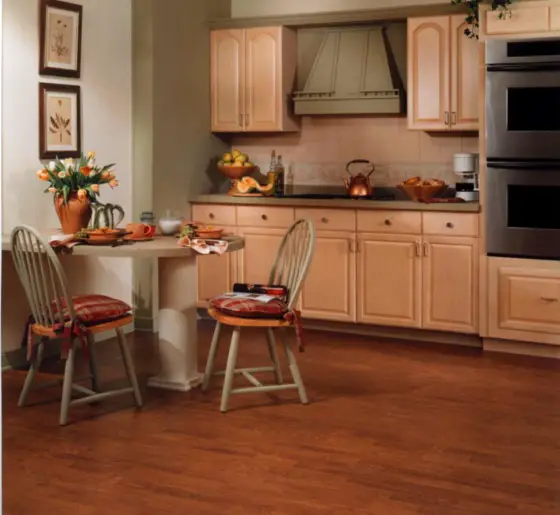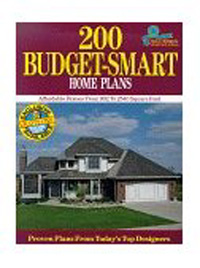Twenty Five Must Avoid Problems During New Home Construction
Here is just a partial list of some of the nightmares that can be avoided with some careful planning before the job starts. With a little thought I am quite sure you will come up with at least ten other items. Identifying problems before they manifest themselves just requires some forward thinking. Try to think in three dimensions. Place yourself in the finished room. Go around your existing home and pick out problems you have lived with for years. Don't make the same mistake twice.
Flooring - In the not too distant past, hardwood floors were not allowed to be installed over OSB sub-flooring. Yet, I saw it done all the time. That requirement has since changed BUT there are still minimum standards for hardwood flooring as well as other floorings. ALWAYS get a set of installation instructions for the finished product and see what is called for. This goes for sheet vinyl, tile, etc.
Hallways - Did you bump or scratch the walls of your hallways or stairwells as you moved into your home? They were possibly too narrow. Forty two inch wide staircases are a minimum in my book. Fifty six inch wide hallways are superb.
Doorways - Doorways into bedrooms should be at least 2 feet 8 inches in width. This will allow you to get that large desk or chest of drawers into the room with ease. Doorways into kitchens, laundry rooms, etc. must be at least 36 inches wide.
Floor Framing Systems - If your builder builds to code you still may end up with a springy or bouncy floor. Stiff floors can be achieved with ease up front but are a nightmare to fix after the fact.
Wire for the Future - The future is here now. You may not have computers networked today but it is a distinct possibility in three or four years. Install CAT-5 wiring to one or more places in key rooms. Each wire should be a separate one from a central network hub. Do not run these wires in a series from outlet to outlet!
Cracked Concrete - Your driveway looks swell when you move in but will it stay that way? If you pour it 5 or 6 inches thick and install 1/2 inch steel bars, it should be crack free for many years.
Roofing Felt Paper - You trust your builder and roofer, right? But all too often they skip an important step - felt paper! Most shingle warranties require it and it is critical to maintain the fire rating of the shingles.
Exterior Wall Water Barrier - There are tens of thousands of houses built with no water barrier on the side walls. Don't count on brick or any siding material to stop water. That is totally unrealistic. At the bare minimum you need felt paper. An air and water infiltration barrier is better.
Hot Water Loop - Do you hate waiting for hot water when you turn on a faucet? A simple recirculating loop can solve the problem.
Low Water Pressure - It is possible that your water pressure is low because of a problem with the city or county water main. But low pressure problems more often than not stem from undersized piping inside the house or under the front lawn.
Fire Safety - An electrical fire is a silent killer. You can avoid it with some preplanning. Install arc fault circuit interrupter circuit breakers. They are a must.
Access Panels - How will you change out the bathtub faucet in the future? If you have an old fashioned access panel it will be easy and fast.
Total Comfort - The indoor climate of your home can be super comfortable if the HVAC system is properly sized and the ductwork or piping is sized correctly. Only 1 in 10 HVAC contractors know how to do this! Choose wisely!
Laundry Room - The plan shows a laundry room but is it big enough? Where will the piles of dirty laundry rest? In a hallway in front of the washer and dryer where you must stand to work? Get the picture? The room needs to be big.
Blocking - Toilet paper holders, towel bars, heavy pictures, etc. need solid wood block behind the drywall or plaster. It takes some planning to get this blocking in the right place. Take photos before the drywall goes up to help you locate it after the fact.
Roof Overhangs - Old houses had generous overhangs. These design features help protect the sides of the house in most rain storms. Don't overlook this feature!
Sound / Noise Control - Plan now for noise control. There are all sorts of things you can do to minimize sound transmission between rooms and between floors. But it MUST be done during construction, not after!
Blank Conduits - What happens if you must add a CAT-5 wire or a telephone line at a later date? If you have blank conduits that extend from the distribution hubs up into the attic space, it will be a breeze. Without these conduits it can be an ordeal to install a wire. The cost of the conduit is possibly less than $50.00.
L Shaped Stairwells - Certain house plans incorporate L shaped staircases. These are a nightmare when it comes time to move large objects. See if you can avoid this problem.
Basement Ceiling Height - It costs extra money to get a basement wall that is 9 feet 6 inches tall. But trust me, you will never regret spending this money! Walls poured this high enable you to get full height finished ceilings in lower levels.
Garages - The garage space on your plan will look enormous when compared to other rooms. But wait till you put in cars, garbage cans, bikes, lawn mowers, etc. The minimum sized garage that I would build would be 25 feet deep and 30 feet wide. The garage door width should never be less than 9 feet. And if you have a full size SUV, you better have one door that is 8 feet tall.
Holiday Lighting - Many people invest lots of time installing and displaying outdoor lighting during the holiday season. This lighting usage is actually extending to other holidays like Halloween and even the 4th of July. Install numerous outdoor electric receptacles at key locations. Make them operate via an indoor switch near your front door or an extra switch at your bedside in case you forget to turn them off.
Ceramic Tile - All too often it is installed over water resistant drywall. This is the drywall with the green paper. It WILL fail in 5 to 7 years! Install ceramic tile on top of cement board. This product is 100 percent waterproof.
Vapor Barriers - They are by no means all created equal. Most builders use clear poly that is one layer and made with recycled material. It often has pin holes in it. For a little more $$$, you can get a high performance vapor barrier.
Ventilation - Roof ventilation is so important. I had a roof rot problem at my own home because a product had yet to be invented. All of the right products are now available. Ventilate!
 The first thing to realize about vinyl tile is that the floor surface it is attached to must be very smooth. This means you need to fill any holes, cracks or depressions. The floor needs to be free of grit and bumps as well. Particles of sand or any other hard object will eventually telegraph through the tile. The best way to check for imperfections is at night. Use an automotive trouble lamp and lay it on the floor and aim the bulb so it shines sideways across the floor. Trust me, you will see imperfections!
The first thing to realize about vinyl tile is that the floor surface it is attached to must be very smooth. This means you need to fill any holes, cracks or depressions. The floor needs to be free of grit and bumps as well. Particles of sand or any other hard object will eventually telegraph through the tile. The best way to check for imperfections is at night. Use an automotive trouble lamp and lay it on the floor and aim the bulb so it shines sideways across the floor. Trust me, you will see imperfections!




